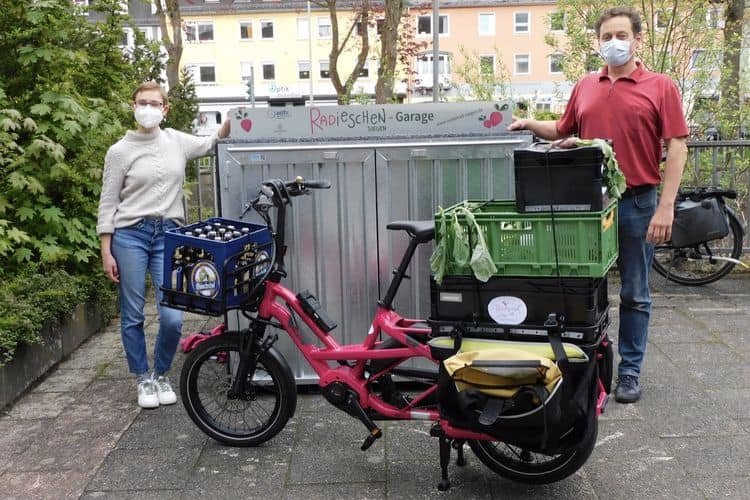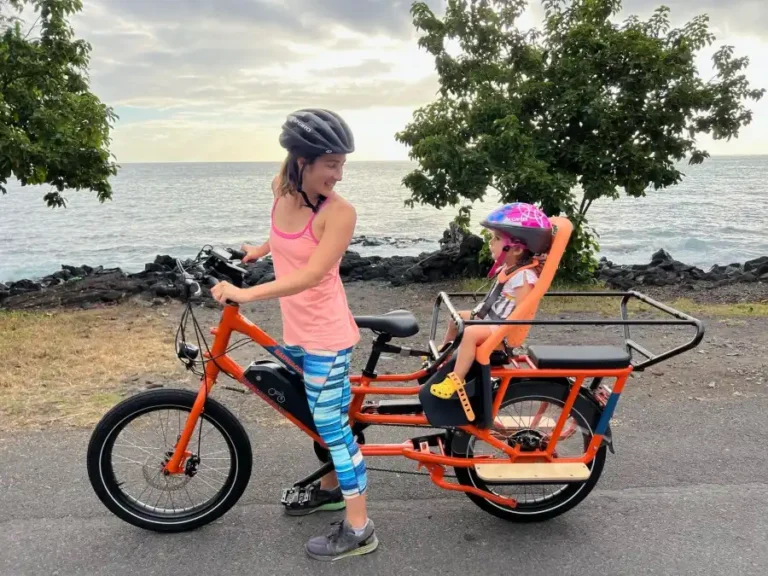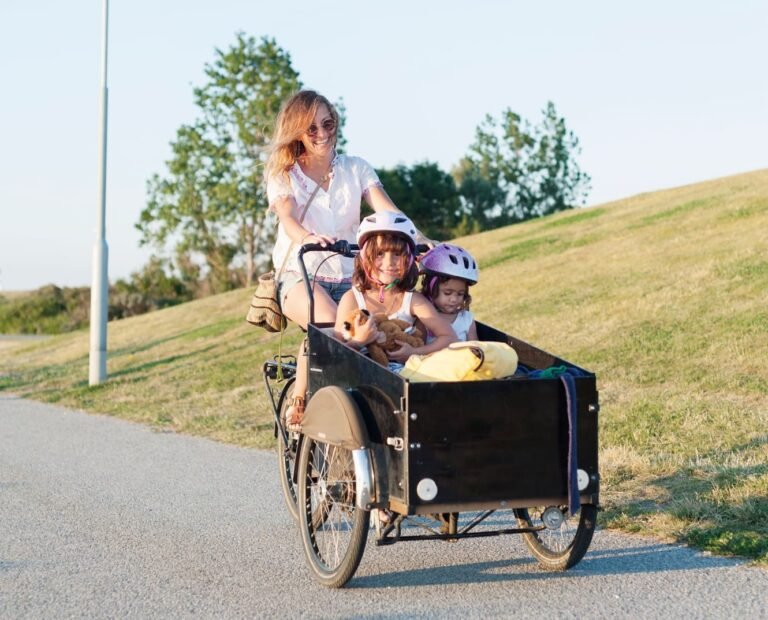Wir von Regen helfen seit Jahren Familien und Stadtfahrern, das Beste aus ihren Lastenrädern herauszuholen. Als vertrauenswürdiges OEM/ODM-Partner für LastenfahrräderWir wissen aus erster Hand, dass die richtige Wartung von Lastenfahrrädern nicht nur die Lebensdauer Ihres Fahrrads verlängert, sondern auch Ihre Fahrten sicher und stressfrei macht. Egal, ob Sie Ihre Kinder zur Schule bringen oder für den wöchentlichen Einkauf einladen, dieser Leitfaden erklärt Ihnen alles, was Sie wissen müssen - ohne Fachchinesisch und ohne Schnickschnack.
Warum regelmäßige Wartung wichtig ist
Lastenräder-besonders solche, die für den Familiengebrauch konzipiert sind- arbeiten härter als normale Fahrräder. Sie tragen mehr Gewicht, sind täglich bei wechselndem Wetter im Einsatz und müssen den Stop-and-Go-Verkehr in der Stadt bewältigen. Ohne ordnungsgemäße Wartung lässt die Fahrqualität schnell nach, und die Sicherheit kann beeinträchtigt werden. Aber die gute Nachricht? Sie müssen kein Fahrradmechaniker sein, um Ihr Fahrrad in ausgezeichnetem Zustand zu halten.
1. Kennen Sie Ihr Cargo Bike: Die wichtigsten Komponenten
Bevor Sie sich mit den Werkzeugen und Techniken befassen, ist es hilfreich, die wichtigsten Teile zu kennen, um die Sie sich kümmern müssen:
| Komponente | Zweck |
|---|---|
| Rahmen & Gestell | Stützt die Last, absorbiert die Belastung durch den täglichen Gebrauch |
| Reifen & Räder | Sorgt für Traktion und stützt das Gewicht |
| Bremsen | Sicheres Anhalten (Felge, Scheibe, hydraulische Optionen) |
| Antrieb | Antrieb des Fahrrads (einschließlich Kette, Kassette, Kurbel) |
| Lenkung | Besonders wichtig bei Long-John- oder Trike-Konstruktionen |
| Elektrisches System | Motor, Batterie, Steuergerät (für E-Lastenräder) |
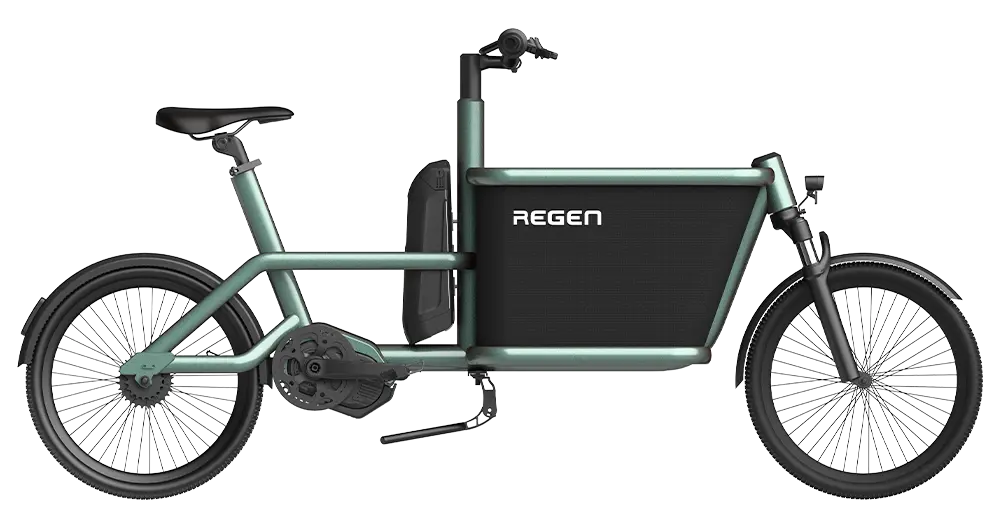
Regen 02 E-Lastenrad
Suchen Sie nach einem kompakten, anpassbaren Frontlader für Ihre Marke?
TÜV-geprüft durch vergangene kundenspezifische Projekte. Öffentlich verfügbares Modell – konfigurierbar, bewährt und skalierbar.
2. Zeitplan für die routinemäßige Wartung
Hier ist eine Tabelle mit Wartungsvorschlägen. Die Häufigkeit hängt von der Nutzungsintensität und den Fahrbedingungen ab:
| Aufgabe | Jede Fahrt | Wöchentlich | Monatlich | Vierteljährlich |
|---|---|---|---|---|
| Reifendruck prüfen | ✅ | |||
| Funktionsprüfung der Bremsen | ✅ | |||
| Sauberer Rahmen | ✅ | |||
| Kette schmieren | ✅ | |||
| Bolzen anziehen | ✅ | |||
| Verschleiß des Antriebsstrangs prüfen | ✅ | |||
| Elektrische Diagnose | ✅ | |||
| Vollständige professionelle Überholung | ✅ |
3. Grundlagen der Reinigung (mit häufig zu vermeidenden Fehlern)
Die regelmäßige Reinigung Ihres Lastenrads verhindert Korrosion und erleichtert die Wartung. Hier ist eine einfache Schritt-für-Schritt-Anleitung:
- Sanft ausspülen mit Wasser-Hochdruckstrahlen vermeiden.
- Verwenden Sie einen fahrradspezifischen Reiniger (oder verdünntes Geschirrspülmittel) und eine weiche Bürste.
- Antriebsstrang separat schrubben mit Entfettungsmittel.
- Mit einem sauberen Tuch abtrocknen und an einem gut belüfteten Ort aufbewahren.
- Kettenschmiermittel auftragen sparsam auftragen und Überschuss abwischen.
Vermeiden:
- Haushaltsentfetter (zu aggressiv)
- Überschmieren (zieht Schmutz an)
- Hochdrucksprays (können Lager beschädigen)
4. Reifen und Bremsen: Ihre erste Verteidigungslinie
- Reifendruck: Halten Sie den Wert innerhalb des auf der Seitenwand aufgedruckten Bereichs. Zu geringer Luftdruck führt zu schlechtem Fahrverhalten, zu hoher Luftdruck verringert den Komfort.
- Bremsbeläge: Prüfen Sie die Bremsen monatlich auf Verschleiß. Scheibenbremsen sollten fest greifen, ohne zu quietschen.
- Kabel/Hydraulikflüssigkeit: Wenn sich die Bremsen schwammig oder uneinheitlich anfühlen, ist es an der Zeit, die Bremsflüssigkeit einzustellen oder nachzufüllen.
5. Kette und Antriebsstrang: Damit alles reibungslos klappt
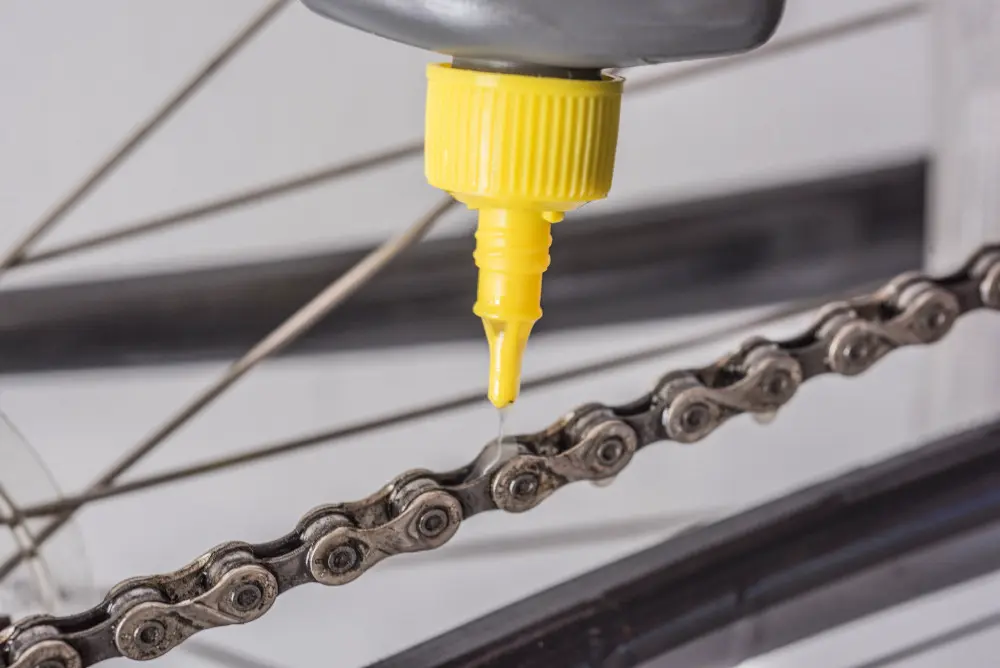
- Kette prüfen: Eine rostige, trockene oder quietschende Kette muss sofort gewartet werden. Verwenden Sie alle 2-3 Monate ein Kettenprüfgerät.
- Schmierung: Verwenden Sie nasses Schmiermittel für regnerische Bedingungen, trockenes Schmiermittel für sonnige Fahrten. Wischen Sie überschüssiges Schmiermittel immer ab.
- Kassette & Kettenblätter: Wenn die Schaltung rau wird oder Geräusche macht, müssen sie möglicherweise gereinigt oder ausgetauscht werden.
6. Elektrische Lastenfahrräder: Extra TLC erforderlich
E-Lastenfahrräder sind ein echter Fortschritt - aber sie brauchen besondere Pflege:
- Tipps zur Batterie:
- Lassen Sie die Batterie nicht vollständig entladen, wenn sie unter 30% fällt.
- In den kalten Monaten im Haus aufbewahren.
- Vermeiden Sie das Aufladen in direktem Sonnenlicht oder in feuchter Umgebung.
- Motor und Steuerung:
- Mit einer trockenen Bürste oder einem Tuch reinigen.
- Waschen Sie diese Teile niemals unter Druck.
- Regelmäßige professionelle Diagnosen helfen, die Lebensdauer zu verlängern.
7. Saisonale Anpassungen
- Regenzeit: Benutzen Sie Schutzbleche, schmieren Sie Ihr Fahrrad nass ein und trocknen Sie es nach jeder Fahrt.
- Winter: Salz auf den Straßen? Spülen Sie das Fahrrad häufig. Ziehen Sie den Wechsel auf Winterreifen in Betracht.
- Sommer: Hitze wirkt sich auf die Batterien aus - halten Sie Ihr Fahrrad so weit wie möglich von der direkten Sonne fern.
8. Häufige Probleme und was zu tun ist
| Symptom | Wahrscheinliche Ursache | Schnelle Lösung |
|---|---|---|
| Quietschende Bremsen | Verschmutzte oder abgenutzte Pads | Pads reinigen oder ersetzen |
| Kette überspringt Gänge | Kette/Kassette verschlissen | Antriebsstrang einstellen oder ersetzen |
| Batterie entlädt sich zu schnell | Überlastung oder alte Batterie | Ladegerät prüfen, bei Bedarf austauschen |
| Seltsames Geräusch von vorne | Lockerer Steuersatz oder Gabel | Schrauben anziehen, Ausrichtung prüfen |
9. Wann Sie einen Mechaniker aufsuchen sollten
Nicht jedes Problem braucht einen Profi - aber manche schon. Hier erfahren Sie, wann Sie Ihr lokales Fahrradgeschäft aufsuchen sollten:
- Nachfüllen von Bremsflüssigkeit (Hydrauliksysteme)
- Motor-/Reglerdiagnose
- Austausch von Kettenblatt oder Tretlager
- Großes Getriebetuning oder Zentrieren von Rädern
10. Abschließende Überlegungen von Regen
Wir konstruieren unsere Lastenfahrräder für das echte Leben - Schulfahrten, Markttransporte, Wochenendausflüge in den Park. Aber selbst der robusteste Rahmen braucht ein wenig Liebe. Ein gut gewartetes Fahrrad hält länger, fährt sicherer und fühlt sich geschmeidiger an.
Sie brauchen Hilfe? Sprechen Sie uns einfach an. Egal, ob es sich um eine Ersatzteilanfrage oder um Tipps zur Einrichtung Ihrer Werkstatt für die Selbstwartung handelt, wir sind immer da, um Familien zu unterstützen, die Regen fahren.
Haftungsausschluss für Bildrechte
Einige der auf dieser Website/in diesem Artikel verwendeten Bilder stammen aus dem Internet und dienen ausschließlich zu Illustrations- und Bildungszwecken und verbessern das Verständnis der Inhalte. Wir respektieren die geistigen Eigentumsrechte der ursprünglichen Urheber und bemühen uns, die Quellen gegebenenfalls anzugeben.
Wenn Sie der rechtmäßige Eigentümer eines hier angezeigten Bildes sind und glauben, dass seine Verwendung eine Urheberrechtsverletzung darstellt, kontaktieren Sie uns bitte unter info@regencargobikes.com. Nach der Überprüfung werden wir das Bild umgehend entfernen oder eine entsprechende Quellenangabe machen.
Vielen Dank für Ihr Verständnis.
© Regen Technology Co., Ltd.



